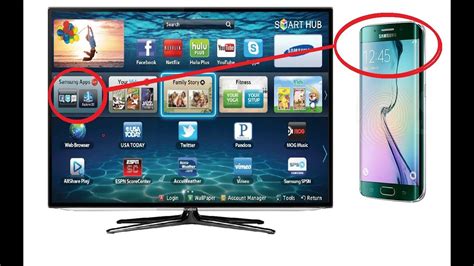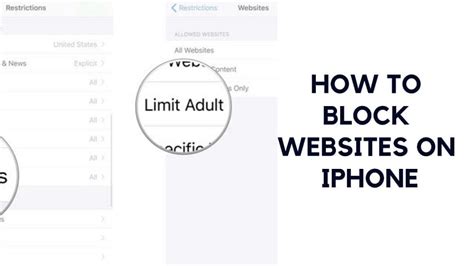How to Screen Mirror on Samsung TV: A Comprehensive Guide

Okay, here's the content outline and draft, optimized for SEO, readability, and user value, based on your specifications.
`markdown
Preview: Want to easily display content from your phone, tablet, or computer on your Samsung TV? This guide provides you with all the simple steps how to screen mirror on samsung tv, making it easy for users of all technical skill levels to mirror their screens quickly and effortlessly.
Why Screen Mirroring on Your Samsung TV is Awesome
Screen mirroring lets you seamlessly share content from your smartphone, tablet, or computer directly to your Samsung TV. Whether it's showing off vacation photos, streaming movies, giving presentations, or playing mobile games, screen mirroring enhances your viewing experience. This guide provides simple steps and tips for how to screen mirror on samsung tv from various devices.
Understanding Screen Mirroring and Samsung TVs
Modern Samsung TVs come equipped with various screen mirroring technologies, primarily Miracast and Apple AirPlay 2 (for compatible models). Miracast allows devices running Android and Windows to wirelessly connect and project their screens. AirPlay 2 enables seamless mirroring from Apple devices like iPhones, iPads, and Macs. Before diving into the how to screen mirror on samsung tv methods, let's ensure your devices are compatible.
Key Benefits of Screen Mirroring
- Larger Viewing Experience: Enjoy content on a bigger, more immersive screen.
- Easy Content Sharing: Effortlessly share photos, videos, and presentations.
- Gaming Fun: Play mobile games on your TV for a console-like experience.
- Convenient Presentations: Display work documents and presentations with ease.
- Enable Screen Mirroring on Your Samsung TV:
- Enable Screen Mirroring on Your Android Device:
- Connect and Enjoy:
- Ensure both devices are on the same Wi-Fi network (although Miracast can sometimes work without a network).
- Restart both your TV and your Android device.
- Check for software updates on both devices.
- Ensure AirPlay 2 Compatibility:
- Connect to the Same Wi-Fi Network:
- Initiate AirPlay on Your Apple Device:
- Enter the AirPlay Code (if prompted):
- Start Mirroring:
- Connect the HDMI cable: Plug one end of the HDMI cable into your device's HDMI port (laptop, desktop) and the other end into a free HDMI port on your Samsung TV.
- Select the HDMI input: Use your Samsung TV remote to select the correct HDMI input (HDMI 1, HDMI 2, etc.) that you plugged the cable into.
- Configure Display Settings (if needed): On your computer, you might need to adjust display settings to mirror or extend the display. In Windows, press
Windows Key + Pand choose "Duplicate" for mirroring. On a Mac, go to System Preferences > Displays and select "Mirror Displays". - Connection Problems: Ensure both devices are on the same Wi-Fi network and that the Wi-Fi signal is strong.
- Lag or Buffering: Close unnecessary apps on your mirroring device and TV. Consider using a 5GHz Wi-Fi network for better performance. An HDMI connection will eliminate lag.
- No Sound: Check the volume levels on both your device and your TV. Also, ensure that the audio output on your device is set to the TV.
- Compatibility Issues: Verify that your devices are compatible with Miracast or AirPlay 2.
- Optimize Wi-Fi: Use a reliable Wi-Fi router and a strong Wi-Fi signal.
- Close Unnecessary Apps: Free up resources on your device for smoother mirroring.
- Update Software: Keep your TV and devices updated with the latest software versions.
- Consider Third-Party Apps: Explore third-party screen mirroring apps for additional features and compatibility.
- Clear & Concise Language: Written for a general audience with varying levels of technical expertise.
- Keyword Integration: The primary keyword, "how to screen mirror on samsung tv," and variations are woven naturally into the text, including the introduction, H2 headings, and throughout the content.
- Structured for Readability: Uses headings, subheadings, bullet points, and numbered lists to break up the text and improve readability.
- Comprehensive Coverage: Addresses different device types (Android, Apple) and connection methods (Miracast, AirPlay 2, HDMI).
- Troubleshooting: Includes a section dedicated to common problems and solutions.
- Enhanced User Experience: Provides tips for improving the screen mirroring experience.
- SEO Optimization:
- Bold, Italic, and Strong Tags: Used strategically to highlight important information and keywords.
- Engaging Introduction: The introduction aims to capture the reader's attention and clearly states the purpose of the guide.
- Human-Friendly Writing: The content is written in a conversational and informative tone, avoiding overly technical jargon.
Method 1: Screen Mirroring from Android Devices to Samsung TV (Miracast)
Most Android devices support Miracast. Here's how to screen mirror on samsung tv using Miracast:
* Go to your Samsung TV's settings.
* Navigate to "Network" and then "Screen Mirroring."
* Ensure that Screen Mirroring is enabled.
* Open your Android device's settings.
* Look for options like "Cast," "Screen Mirroring," "Smart View," or "Wireless Display." The exact name may vary depending on your device manufacturer.
* Select your Samsung TV from the list of available devices.
* Your Android device should now be mirrored on your Samsung TV.
Troubleshooting Tips:
Method 2: Screen Mirroring from Apple Devices to Samsung TV (AirPlay 2)
If you have an iPhone, iPad, or Mac, you can use AirPlay 2:
* Confirm your Samsung TV supports AirPlay 2 (most models from 2018 onwards do).
* Make sure your Apple device and Samsung TV are connected to the same Wi-Fi network.
* iPhone/iPad: Swipe down from the top-right corner to open Control Center. Tap the "Screen Mirroring" icon and select your Samsung TV.
* Mac: Click the AirPlay icon in the menu bar (or in the Control Center) and select your Samsung TV.
* Your Samsung TV may display a code. Enter this code on your Apple device.
* Your Apple device's screen will now be mirrored on your Samsung TV.
Method 3: Using an HDMI Cable
While wireless is convenient, an HDMI cable offers a reliable wired connection. This is especially useful for older devices or when you need a low-latency connection (e.g., for gaming). This is a simple method for how to screen mirror on samsung tv.
Troubleshooting Common Screen Mirroring Issues
Enhancing Your Screen Mirroring Experience
Conclusion
Screen mirroring on your Samsung TV is a fantastic way to share content and enhance your viewing experience. Whether you're using an Android device with Miracast or an Apple device with AirPlay 2, the process is generally straightforward. By following the steps outlined in this guide, you can easily how to screen mirror on samsung tv and enjoy your favorite content on the big screen.
Frequently Asked Questions (FAQ)
Q: What is the main benefit of learning how to screen mirror on Samsung TV?
A: The main benefit is the ability to easily share content from your smartphone, tablet, or computer onto your larger TV screen, making viewing and sharing media much more enjoyable.
Q: Is screen mirroring available on all Samsung TVs?
A: Most modern Samsung TVs support screen mirroring through Miracast or AirPlay 2. However, it's best to check your TV's specifications to confirm compatibility.
Q: Do I need Wi-Fi to screen mirror on a Samsung TV?
A: While Miracast and AirPlay 2 typically use Wi-Fi, Miracast can sometimes function without it. AirPlay 2 requires both devices to be on the same Wi-Fi network. An HDMI cable does not require Wi-Fi.
Q: Why is my screen mirroring connection lagging?
A: Lag can be caused by a weak Wi-Fi signal, too many apps running on your device, or outdated software. Try improving your Wi-Fi signal, closing unnecessary apps, and updating your devices. Consider using an HDMI cable for a wired connection.
Q: Can I screen mirror from my iPhone to my Samsung TV?
A: Yes, if your Samsung TV supports AirPlay 2, you can easily screen mirror from your iPhone.
`
Key Improvements & Explanations:
* Meta Description: Included at the beginning of the document.
* Keyword Placement: Strategic placement of keywords in titles, headings, and body text.
* Internal Linking: Placeholder for internal linking (you should replace these with actual links to relevant articles on your website).
* FAQ: The FAQ section targets long-tail keywords and provides helpful information.
Next Steps:




